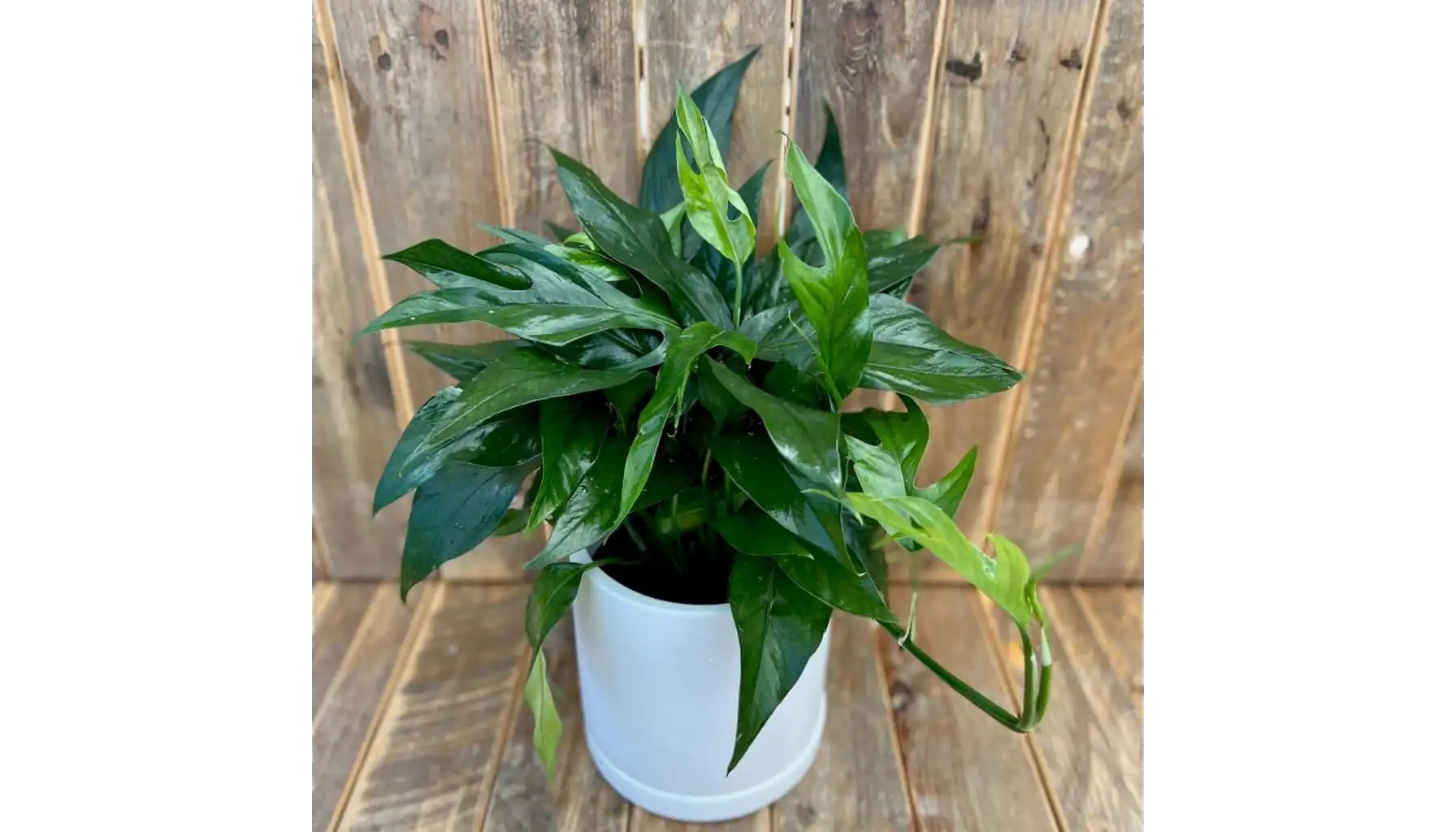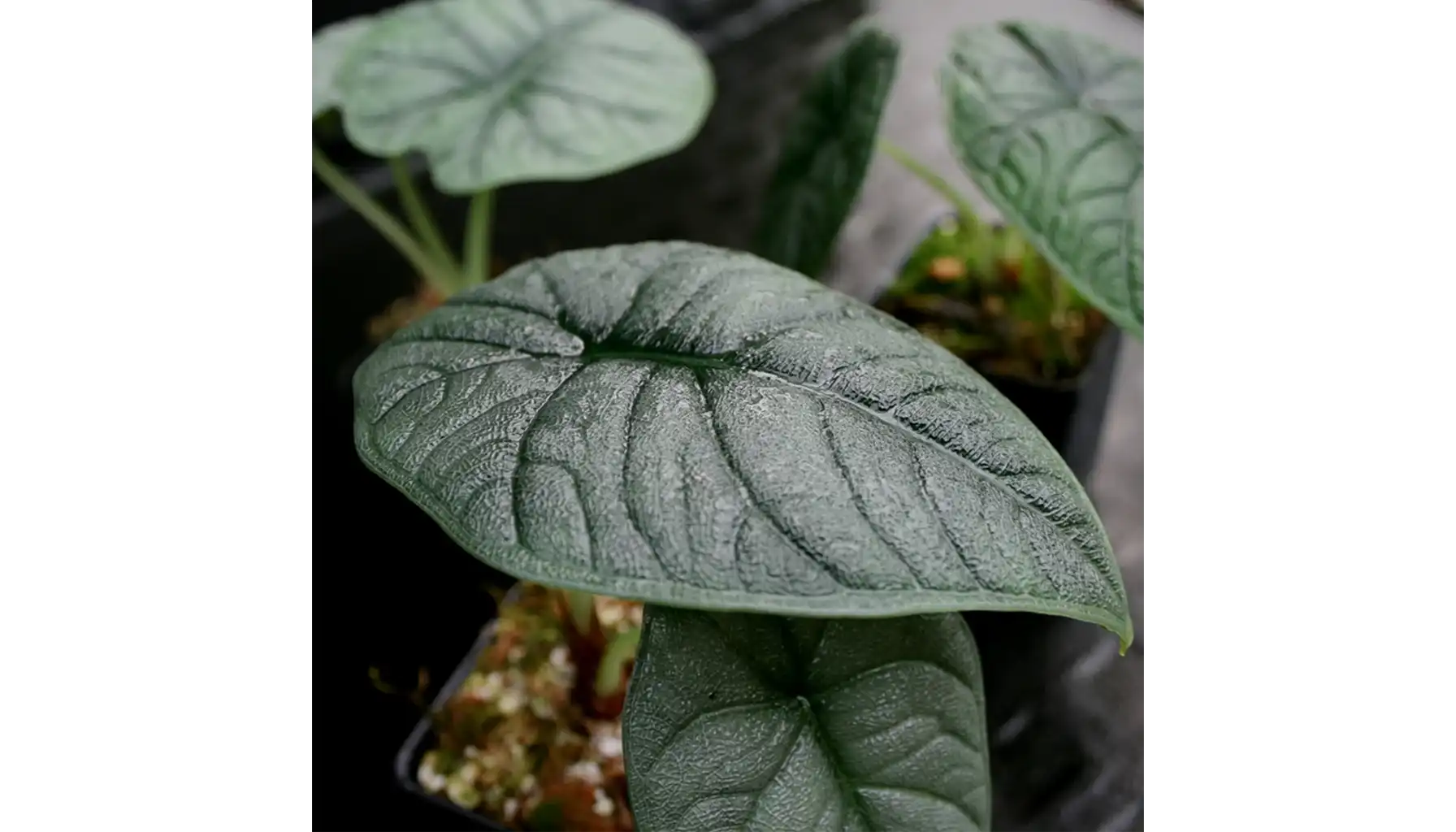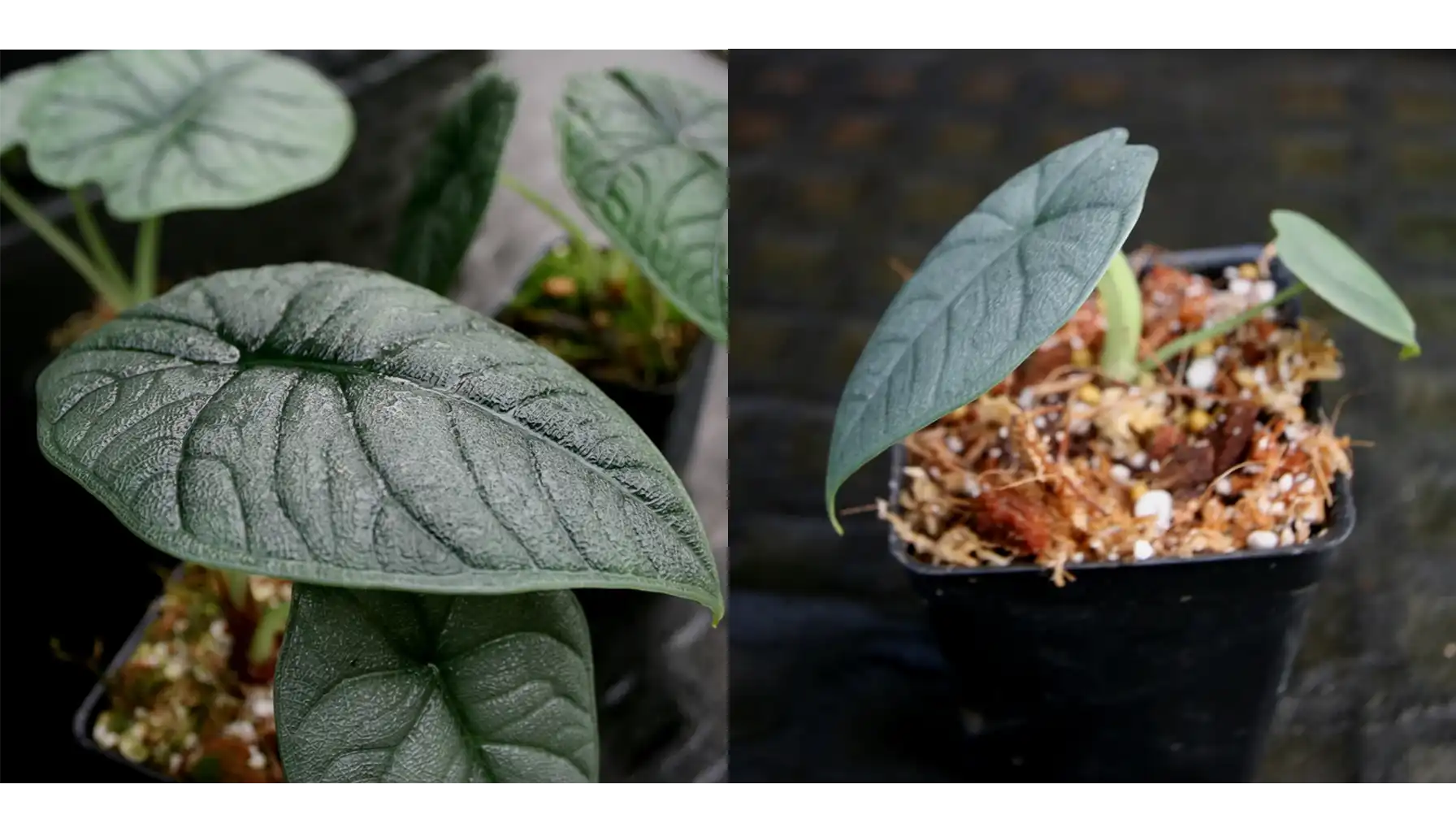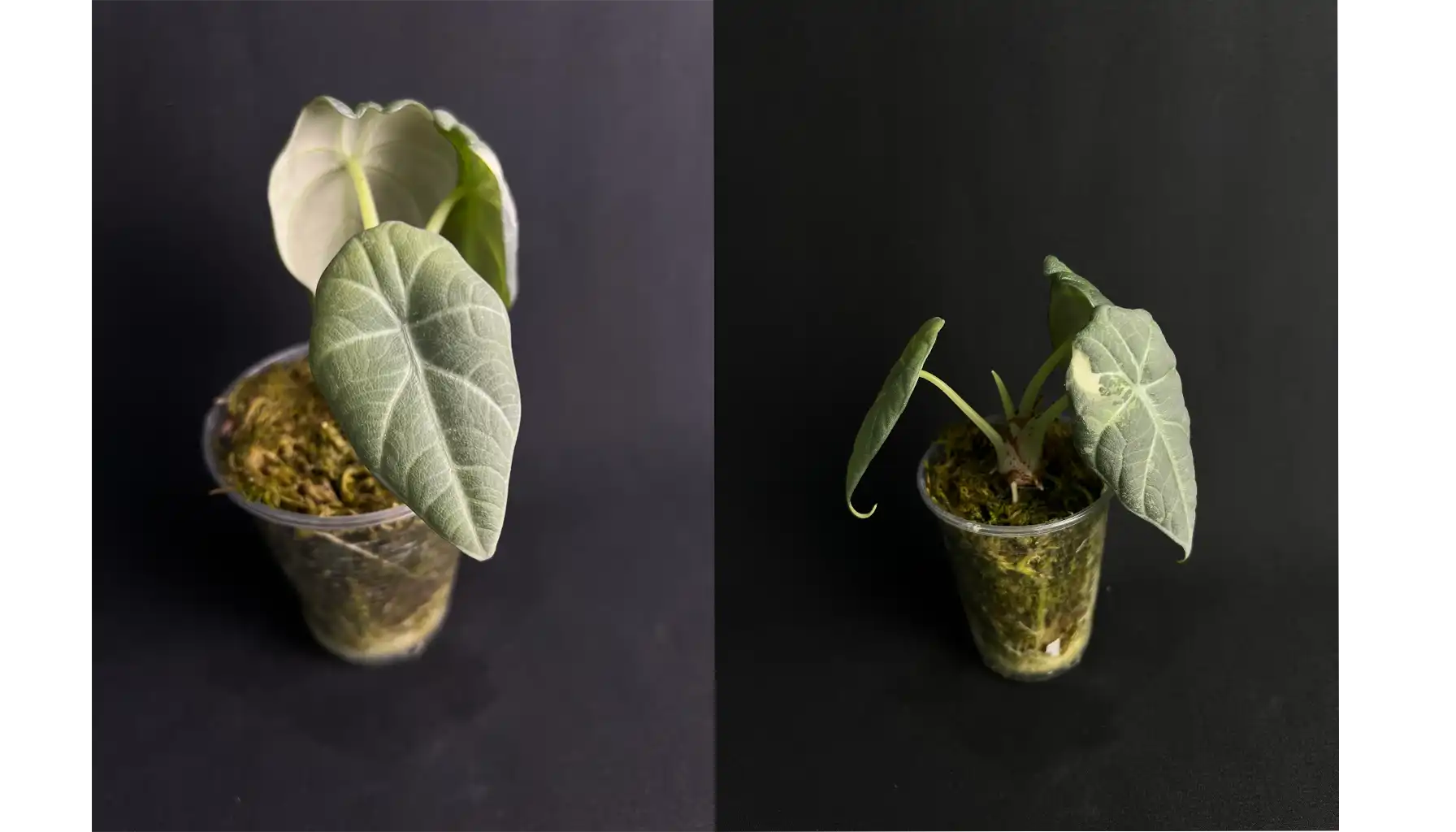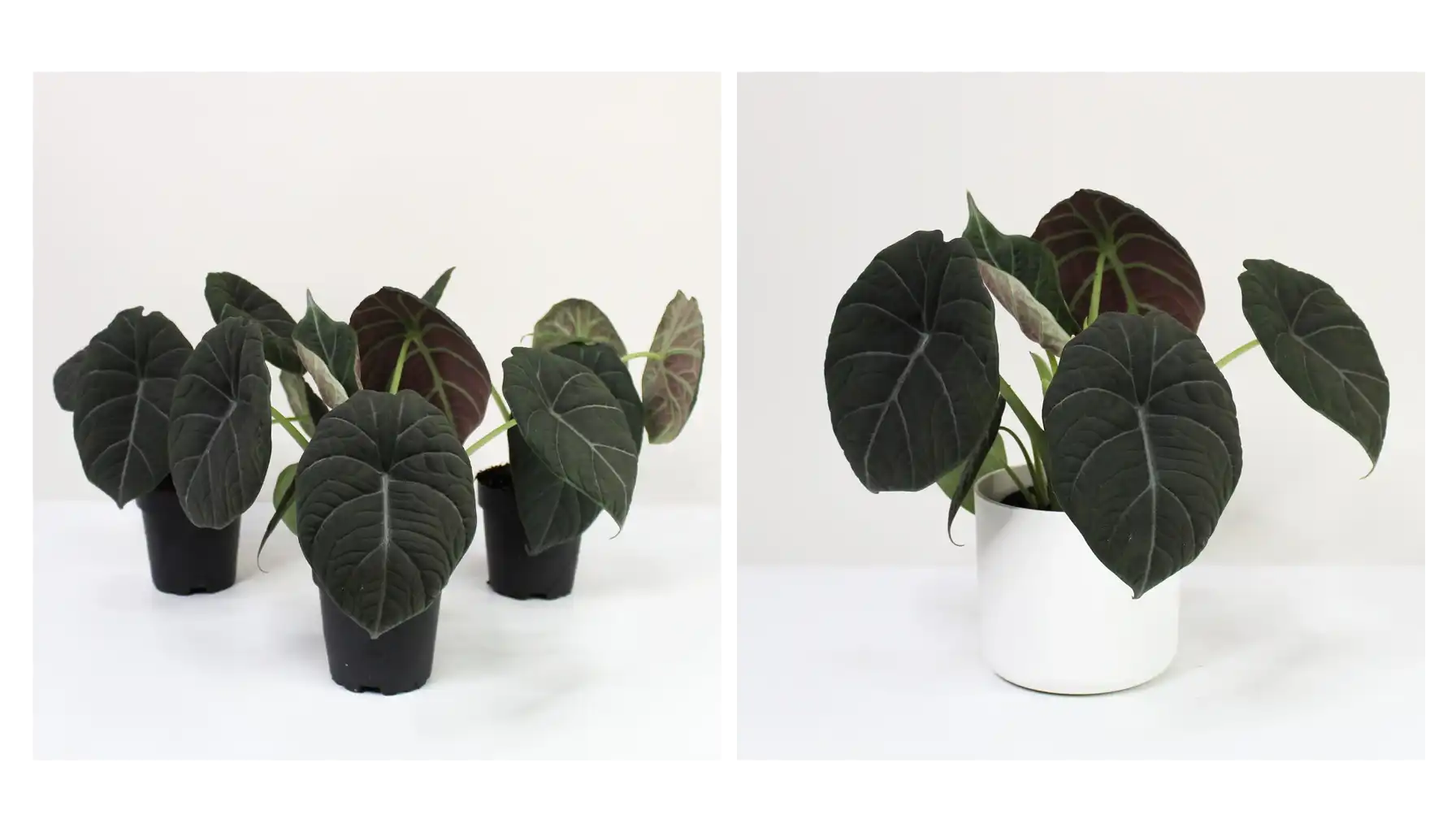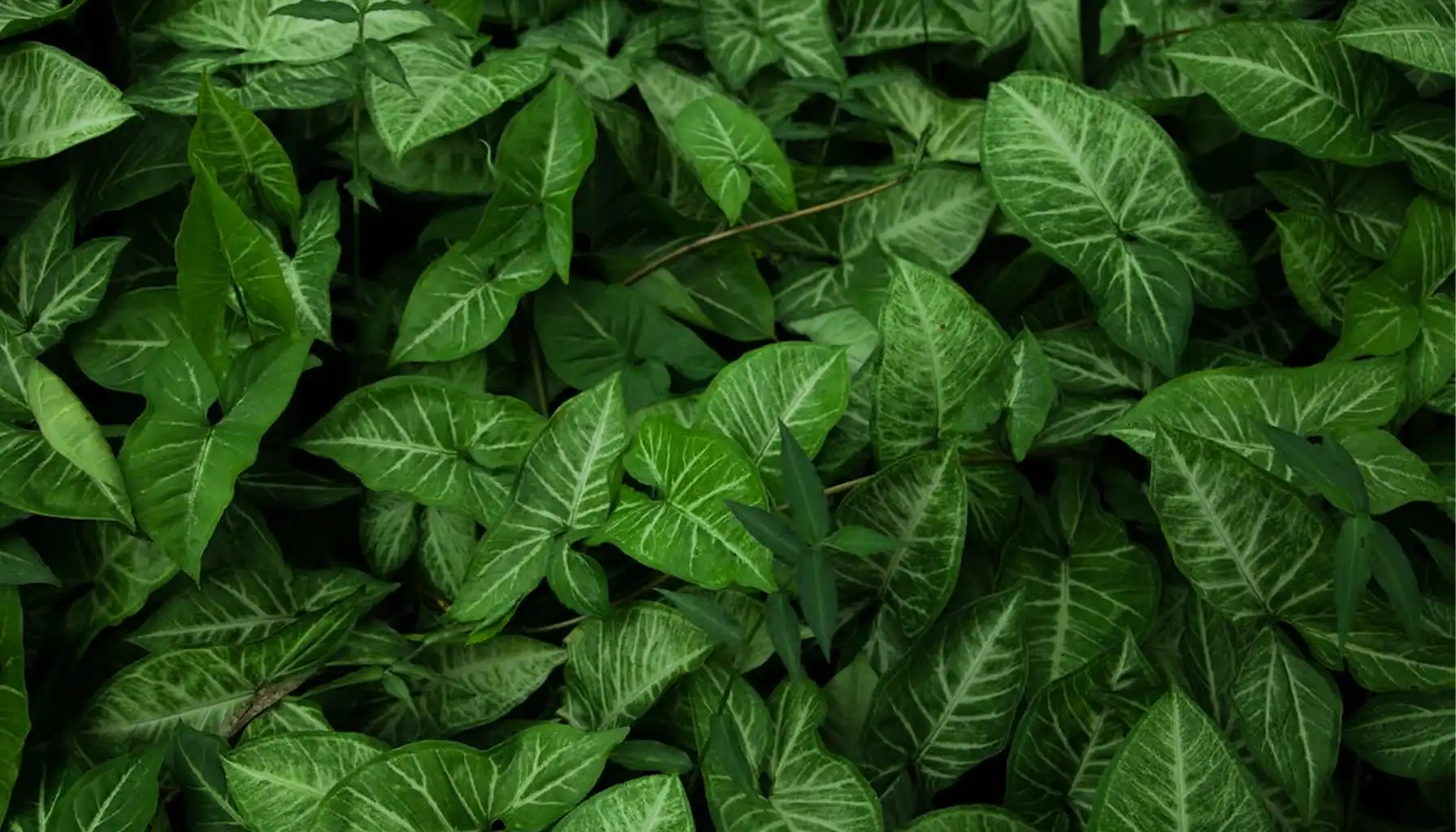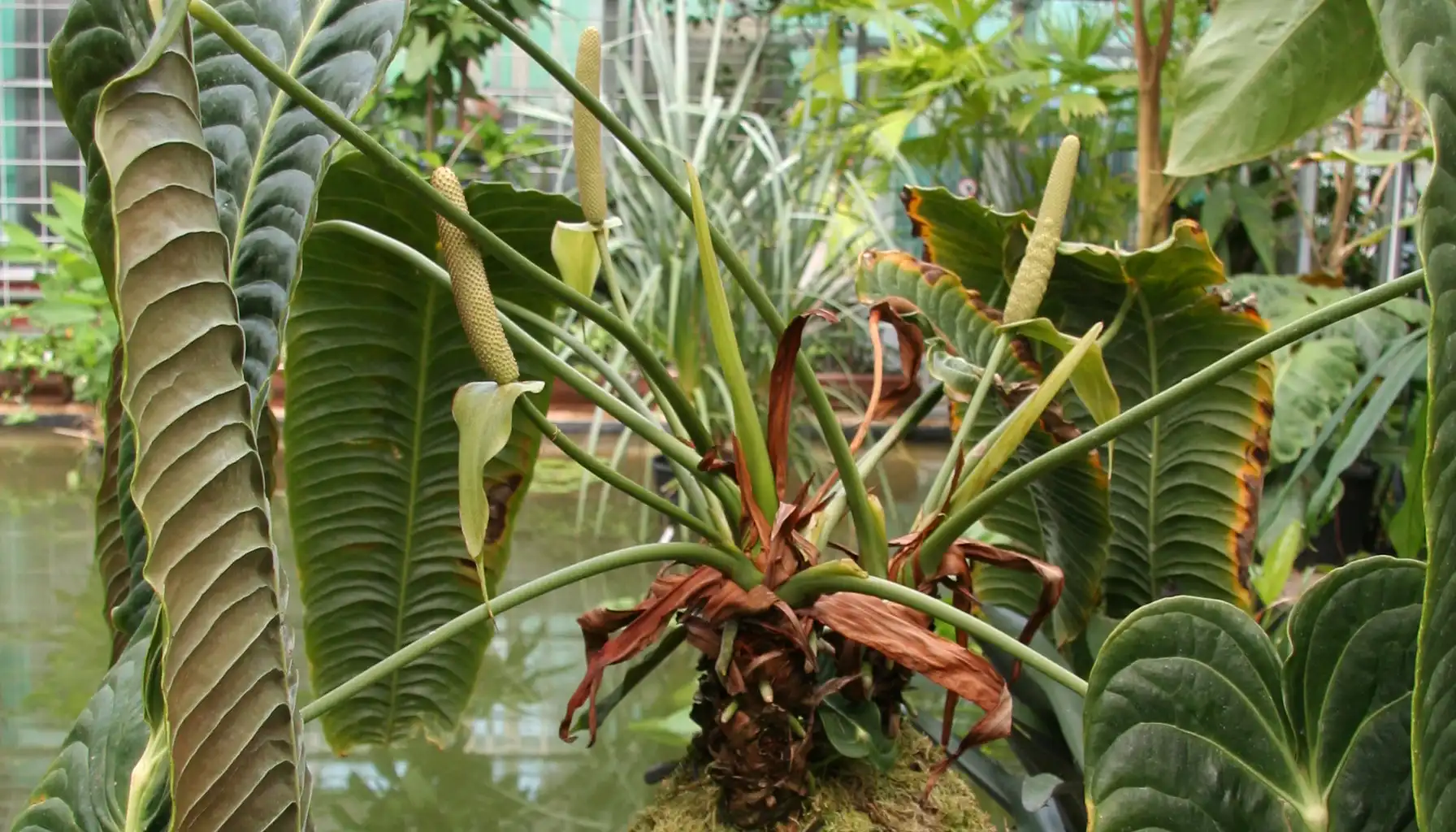.If you're looking to add a unique plant to your collection, consider Alocasia maharani, a tropical beauty with grey-green textured leaves. Known as maharani Alocasia, this plant is popular for its compact size and unusual appearance. It's a hybrid between the native Melo Alocasia and the hybrid Black Velvet Alocasia.
To determine for sure whether your plant is this species, try using plant identifier.
What Is Alocasia Maharani?
Origin and Characteristics
Alocasia 'maharani' is a member of the Araceae family, which grows in the tropical forests of Southeast Asia. It is called "Grey Dragon" for its leaves with a gray-green tint and a texture reminiscent of scales, because the veins are pressed inward. Also, the word "maharani" in Hindi means "princess". The variety is not particularly capricious, but still requires attention.
The plant's juice is extremely poisonous, and an accidentally broken leaf or a stem chewed by your pet can cause burns to the skin and mucous membranes.
Hydrocyanic acid, when it enters the human body, blocks the enzyme that is directly involved in the process of oxygen transfer, as a result of which oxygen starvation rapidly develops and a person can die from suffocation.
Key Features
Botanical Name: Alocasia maharani
Family: Araceae
Plant Type: Perennial, rhizomatous
Mature Plant Size: Up to 35 cm tall (indoors)
Light: Bright, filtered light
Soil: Moist but well-drained
Flowering: Spring, summer (rarely indoors)
Hardiness Zones: 10 (USDA)
Toxicity: Poisonous to pets
Alocasia Maharani Care
Lighting
Alocasia maharani grey dragon likes bright but diffused light. The leaves are easily burned in direct sunlight, which leads to the appearance of unsightly brown and yellow spots.
A north-facing windowsill is suitable, because the alocasia will always receive only indirect light. An east-facing windowsill is good too. In this case, a little weak direct sunlight will fall on the alocasia, without damaging the leaves.
Place the pot 1-2 meters from a window with a curtain if the window faces south.
Rotate the pot once a week for uniform growth.
Use plant lights if natural light is insufficient.
Light options:
The red spectrum increases the accumulation of chlorophyll, promotes the lengthening and strengthening of the stem, and is also responsible for flowering and fruiting.
The blue spectrum is very important at the stage of plant development, namely shoots, helps more intensive growth and increase in greenery, is necessary for the synthesis of chlorophyll.
The mixed spectrum is indispensable for indoor plants. This is the so-called basic spectrum of violet glow. Blue-red glow is vital for plants as additional lighting in the autumn-winter season.
It is best to place the source of additional lighting directly above the sprouts to imitate real sunlight. If the planting area is large enough, it is worth using several phytolamps.
To prevent the light from burning the leaves, experienced plant growers recommend a distance from the greenery to the light source of at least 25 cm, and in some cases even 60-70 cm.
Soil and Watering
Alocasia maharani variegata requires loose, rich soil with good drainage. A mixture of potting soil, perlite and orchid bark is suitable. Moderate watering is recommended. It’s much easier to add water than to remove excess, so always start with a small amount of spraying. You can add charcoal to the soil - it will protect the roots from getting wet with abundant watering.
Check the top layer of soil (2-3 cm): it should dry out before watering.
Use a pot with drainage holes to avoid stagnant water.
Do not allow the soil to dry out completely.
Temperature and Humidity
Alocasia maharani albo variegated, comes from the tropics, where it’s warm and humid, so they are demanding. Humidity levels of over 50% will please this plant, and an average temperature in the house of about 18-27°C will be ideal. If the air in the house is dry, install a humidifier or place the pot on a tray with damp pebbles.
Keep the plant away from drafts and cold windows.
Place it in the bathroom or kitchen, where the humidity is higher.
Misting does not replace a humidifier, but it can help in hot weather. A spray bottle is your number one assistant.
Fertilizer
In order for Alocasia maharani mature to grow lushly, during the period of active growth - from March to October, alocasias need to be fed once every 2 weeks. Regular fertilizers for indoor plants are suitable.
Choose a balanced fertilizer (e.g. 10-10-10). Use coco coir and sphagnum moss sparingly as they retain a lot of moisture.
Don’t fertilize in winter to avoid overloading the plant.
Water before fertilizing to avoid burning the roots.
Main components:
Leaf soil (30%) – nutrient base, adds looseness.
Peat (20%) – adds slightly acidic reaction, retains moisture.
Perlite or vermiculite (20%) – improves air and moisture permeability.
Bark (fine fraction, 15%) – helps maintain soil structure.
Coconut substrate (10%) – regulates humidity.
Charcoal (5%) – prevents root rot.
What to avoid when choosing soil and fertilizers:
Clay or dense soils – cause moisture stagnation and root rot.
Garden soil – compacts, insufficiently air- and water-permeable.
Excess peat – risk of overwatering or difficulties with repeated moistening.
Garden humus – too "fat", can cause souring.
Alocasia Maharani Varieties
Alocasia Maharani Albo and Variegated Alocasia Maharani
The maharani albo Alocasia variety has white or cream spots on its leaves, making it even rarer. Alocasia maharani aurea has a golden hue, adding brightness. These varieties require a little more light to maintain the variegated coloring, but otherwise care is similar.
Young plants, or Alocasia maharani baby, are more compact and better suited to smaller spaces. Their leaves are smaller, but the texture and color are just as expressive. This species will combine well with Begonia.
Propagation and Transplantation
How to Propagate Alocasia Maharani Flower
Alocasia maharani flower rarely blooms indoors, and flowers are often cut to improve leaf growth. The plant is propagated by dividing the rhizomes (tubers). This is more difficult than cuttings, but possible:
Remove the plant from the pot and find the tubers in the soil.
Separate them. The roots can be cut off.
Place the tuber in moistened sphagnum moss. You need to create a greenhouse effect.
Keep it in a warm place with bright, diffused light.
After a few weeks, roots and sprouts will appear, after which you can transplant it into the soil.
If you propagate by seeds, sprinkle them with a little soil, moisten and cover with film. Then put it in a warm place and watch the process.
Transplantation
Replant the plant every three years when the roots begin to emerge from the drainage holes. Use a pot 2–5 cm larger than the previous one.
Replant in spring or summer.
A day before replanting, it’s advisable to slightly moisten the soil to make it easier to remove the flower from the old pot.
When removing the plant, you should act carefully, trying not to damage either the underground or above-ground parts. If some of the roots are damaged or have rotten areas, they must be carefully cut off with a sterile tool.
Carefully clean the roots from the old soil. The transshipment method is used.
Water after replanting and return to the usual place.
Some gardeners are guided by the phases of the Moon. The waxing Moon is considered a good time for planting and rooting, and the waning Moon is for care and pruning. Avoid the full moon and new moon: plants are vulnerable at this time.
Problem | Cause | Solution |
Yellow leaves | Overwatering | Reduce watering, check roots |
Brown leaves | Low humidity | Increase humidity, use humidifier |
Elongated stems | Not enough light | Move to a brighter location |
Problems and Pests
Common Pests
Alocasia maharani is not prone to specific pests, but watch out for spider mites, mealybugs and thrips. Inspect the leaves regularly and wipe them with a damp cloth.
To control pests, separate the infested plant from other plants, collect visible insects by hand, use neem oil or pesticides.
Read also “Why Is My Plant Dying? AI Diagnosis & Solutions” to make sure you avoid a difficult situation.
Frequent Illnesses
Root rot. The main symptom of the disease is leaves wilting for no apparent reason. But in fact, there is a reason – excessive watering and too cold soil. The plant can only be saved at the initial stage of the disease. And the first thing you need to do is take it out of the old pot, cut off all the rotten roots, sprinkle the cuts with crushed coal and plant the bush in a new pot with fresh soil.
Late blight. This disease is also associated with rotting, but the rot begins at the base of the shoots, and then rises up. It can be provoked by high soil or air humidity at low temperatures.
Anthracnose. It appears as gray or brown spots on the leaves. The cause is often excessive watering and stagnant water in the root zone. Three treatments of the plant have proven themselves well in the fight against the disease.
Powdery mildew. It also occurs from excess moisture. You can recognize it by the white spots. It will look like it was sprinkled with flour.Related AI Plant Finder Posts
